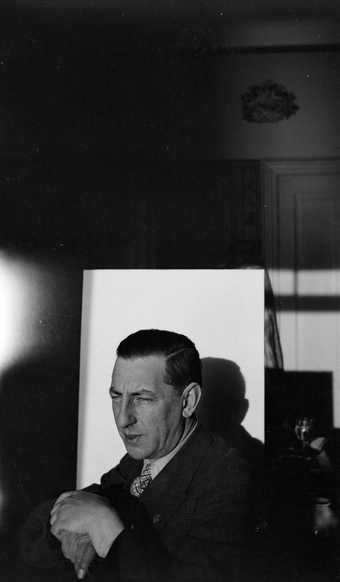
The archive room under Tate Britain is a large, temperature-controlled bunker. Calm lighting washes over ceiling-height shelving racks. On the shelves rest cardboard boxes of every shape and size containing all manner of strange and desirable objects: letters, menus, models, Roger Fry’s paint palette, Paul Nash’s war photographs, the ribbon worn by the girl in Degas’ Little Dancer Aged Fourteen (1880–1, cast c.1922) and more. The Tate archive is to art what the warehouse section at Ikea is to home furnishings. Anything that one could want is here. All one has to do is get hold of it.
The archive has been catalogued – heroically, given its heterogeneous nature. The catalogue has been computerised. Boots, I decided, were my prerequisite for a good first step into the treasure trove. Metaphorical footwear for metaphorical legwork. Into the search box goes ” BOOT”.
“Letter (draft or copy) in pencil from Stanley Spencer to Mr Boot regarding Boot’s failure to buy a Spencer picture he had commissioned (probably The Builders).”
This – item number TGA 733/1/147 – is not the boot I had in mind. But I am intrigued by Mr Boot’s recalcitrance (and desperately sorry for his grandchildren; a decent Spencer will fetch around a million at auction). Who was Boot? Why had he not coughed up?
Koolhaas suggests not developing some of the rooms. He asks the question: “Is there a virtue in neglect; does authenticity flourish in what remains untouched?”
The next entry, for item TGA 733/2/22, is for a twenty-page note headed “Renal Stones”. Here, according to the catalogue, Spencer documents his kidney stone problems from 1930 until 1934, when they were removed. “Also mentioned, the refusal of a wealthy builder (Mr Boot?) to purchase the paintings he had commissioned”, probably ” Saint Francis and the Birds ” and ” The Lovers”.
My sympathy for the heirs of Boot is growing. Could I track them down and interview them? Without gloating?
We have to listen to the artists. It is wonderful to remember what the Dia Foundation managed in the 1970s. For example, it was responsible for La Monte Young’s Dream House and Walter de Maria’s Lightning Field. At the moment there is a risk that this emphasis on the artist might disappear. My museum of the future is about being close to those who make the art. It includes chapters and laboratories, large halls as well as small rooms, white cubes and anti-white cubes. It is a perspective rooted in complexity, in the unexpected, the spontaneous and the unplanned.
The answer is in the negative. The collection gives the reference number TGA 733, but the catalogue states it cannot be consulted without the written permission of the Spencer Estate. On the back of the final two sheets on which Spencer recorded his renal and Boot-related woes are “pencil notations about his moral strength”. This, in our age of psycho-biography and other such posthumous muckraking, is presumably the reason for the restriction. I want Boot, not access to Spencer’s private thoughts, but how to winkle him out of collection TGA733?
A member of staff advises me that a letter addressed to Spencer’s surviving children would be the first step.
“Dear Ms U and Ms S Spencer, I was looking for a pair of boots suitable for archival terrain. You might recall a local builder…”
It wont wash.
Archives are contradictory places.
They protect to survive.
Boot, of course, would prove unwearable in any case. (And, being singular, I would have to hop.) But archives exist to guarantee such quests. Every scribbled-on piece of paper or twist of ribbon will someday be someone else’s Holy Grail. The boxes remain unbroached, and more alluring than ever. I am bootless. “We have socks,” the archivist tells me.
